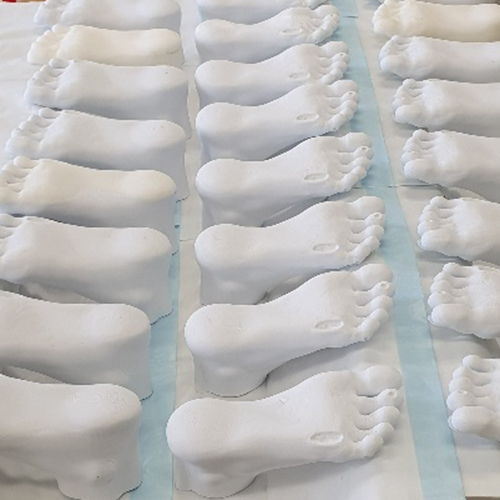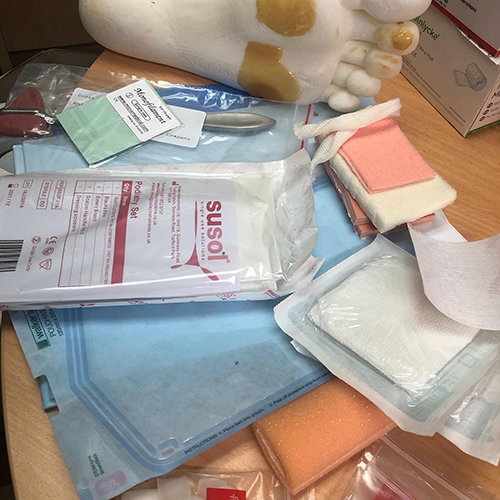27 April 2020
 3D-printed feet – complete with calluses, corns and fake toenails – will enable UniSA’s podiatry students to practise and fine-tune their podiatry skills from the comfort of their own home, ensuring they attain the required practical experience amid Covid-19.
3D-printed feet – complete with calluses, corns and fake toenails – will enable UniSA’s podiatry students to practise and fine-tune their podiatry skills from the comfort of their own home, ensuring they attain the required practical experience amid Covid-19.
It’s a massive coup for UniSA’s podiatry students who are required to have approximately 1000 hours of clinical practice over their degree to be competent to practice – an issue that’s causing much concern for many universities as they grapple to compensate face-to-face clinical experience.
Created and introduced in a world first podiatry training initiative last year, the foot models are part of a podiatry kit, which has been sent to all UniSA’s second-year podiatry students.
Leading podiatry expert and lecturer, UniSA’s Dr Helen Banwell, says the podiatry kit will deliver unique and realistic training experiences for students, to ensure they complete their degree within the allocated time.
“Clinical placements are one of the most critical learning aspects across all allied health degrees because they allow students to gain hands-on, practical experience. Yet, with social distancing, this is made so much harder, and many universities are finding it impossible to supplement this aspect of the degree,” Dr Banwell says.
“UniSA is in a unique position, not only because we have the only degree of its kind in South Australia, but also because our team’s forward thinking and creativity to conceive the 3D-printed feet as a teaching tool has really enabled us to adapt to these unforeseen circumstances.
“By providing our students with their own podiatry kit – which not only contains the 3D-printed foot, but also a variety of dressings, paddings, and disposable scalpels and instruments – we will be able to teach key podiatry skills remotely, to ensure that every one of our students is afforded the opportunity to finish their degree within the four years.”
With demand for podiatrists continuing to rise, there is an acute need for highly skilled professionals. In Australia, more than 300,000 people are at risk of diabetes-related foot disease on any given day. Dr Banwell says that despite the guidelines and uptake of podiatry services, diabetic-foot disease accounts for around 27,600 public hospital admissions, 4400 lower extremity amputations and 1700 deaths each year.
“More than 80 per cent of diabetes-related amputations are preventable with best practice treatment and on-going management,” Dr Banwell says, “but it’s only through first-class training and practice, such as we provide in the UniSA degree, that we can hope to change this.
 “Using the podiatry kit, and online teaching tools, students will be able to assess, plan and practise treatment of a range of foot conditions. Plus, as they’ll be using their own set of tools, we’ll be able to show them how to prepare for sterilisation.
“Using the podiatry kit, and online teaching tools, students will be able to assess, plan and practise treatment of a range of foot conditions. Plus, as they’ll be using their own set of tools, we’ll be able to show them how to prepare for sterilisation.
“While Covid-19 is putting a stop to much needed tertiary podiatry training around the world, UniSA students can rest assured that they will get the very best skills.
“Who would have thought that one day I’d be ordering 500 fake toenails? But when times are tough, you really need to think creatively in order to get through. That’s exactly what we’ve been doing for podiatry at UniSA.”
…………………………………………………………………………………………………………………………………………………
Media contact: Annabel Mansfield office (08) 8302 0351 mobile 0417 717 504
email Annabel.Mansfield@unisa.edu.au
Researcher: Dr Helen Banwell office (08) 830 21256 email: Helen.Banwell@unisa.edu.au



